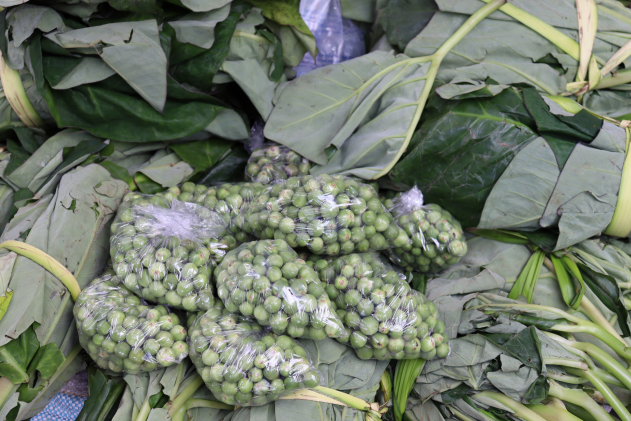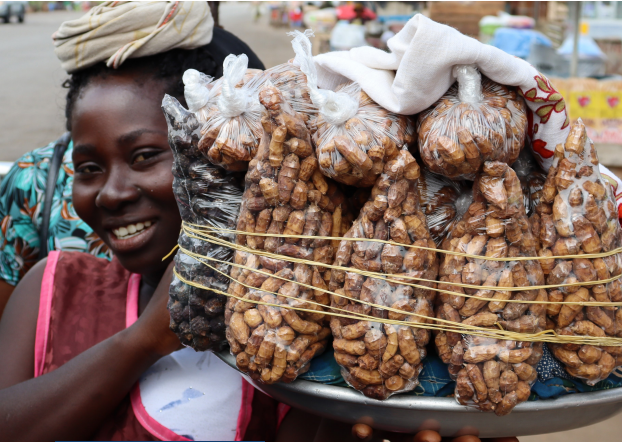Roles, Trends and Challenges of Neglected and Underutilized Species in Ghana
Scientists estimate that there are more than 400,000 species of plants on earth, at least half of which are edible for humans. And yet we consume just a tiny fraction of that, about 200 plant species. Moreover, just three crops (maize, rice, and wheat) account for more than half of the calories and proteins that humans get from plants. This dependency on a small number of crops is risky and even more so with the limited resilience to climate shocks we are already observing. Together with our colleagues from The Hague the West Africa team managed to get the The Alliance of Bioversity International and the International Center for Tropical Agriculture (CIAT) to take a closer look at neglected and underutilized species (NUS) in Ghana.
NUS are important for local food systems and nutrition. They play an important role in socio-cultural traditions; but also the medicinal use; contribution to income generation or even the use as animal feed are at best suboptimal. NUS also contribute to securing non-food related ecosystem services from agriculture, including climate mitigation, water flow and water quality control. Potentially they can play an immensely important role in healthy food systems that provide nutritious food and which is less dependent on just a few crops and is more climate resilient.
"NUS can play an immensely important role in healthy food systems that provide nutritious food and which is less dependent on just a few crops and is more climate resilient"
NUS in Ghana
Previous studies [i] listed 72 NUS cultivated in the Ghana, which is about 60% of the 126 documented varieties in the whole of the African continent. The 72 species identified based on a country survey across all agro-ecological regions, include 21 indigenous vegetables, 8 root and tuber crops, 7 cereals, 12 legumes and 24 edible wild fruit trees. The species that have high market value are usually cultivated on-farm, popular among consumers, and eaten in many local dishes.

The NUS diversity currently available can be attributed largely to the efforts of farmer communities to sustainably use these species and varieties. For rural communities in Ghana, neglected and underutilized crop species are particularly important for nutrition, food security and income generation. Farming communities around Africa have conserved NUS as part of local food systems for centuries.
Challenges of NUS in Ghana
Despite the important role of NUS in Ghana, many of them stand to be genetically eroded. NUS cultivation is under pressure due to socio-economic changes, modernization of agriculture (mono-cropping, mechanization and use of chemical inputs), agrarian conflicts (e.g. livestock infringement on cropland) changing eating habits (from nutrient rich to energy rich foods)and policies that are not favoring NUS production and consumption. Ghana’s key agricultural policies and related programs and projects point to a very strong focus on major staple crops and commodities, with very limited attention paid to NUS.
Other challenges include: population growth; expansion of land cultivated with staple and cash crops; dwindling pollinator and disperser populations (due to modern agriculture, environmental degradation and pollution); unavailability of seed and other planting material; migration of younger generations to cities and, limited attention (and support) for NUS in research, extension, education and policy.
Very little is known about their diversity and potential and not much has been published about NUS in Ghana. A combined search on the Web of Science and CABI Direct for the period 2010-2021 resulted in only about 20 articles.

Way Forward
From experience in other countries, it is known that a viable NUS action plan should make use of a food systems or value chain approach, from farm to fork and from fork to farm. Such an action plan combines three major activities: 1) providing evidence through participatory research, e.g. inventories and characterizations, identification of NUS with good potential and exploration of ways to add value to NUS; 2) influencing policy and markets to create demand, mainstream and support NUS; and 3) creating awareness about the multiple benefits of NUS.
The agricultural team in West Africa together with the colleagues in The Hague and CIAT will continue to work with and support local actors on this important theme. Send us an email via acc-lnv@minbuza.nl if you want to know more.
You can also follow this link to read more from a recently conducted review of recent literature on NUS in Ghana by The Alliance of Bioversity International and the International Center for Tropical Agriculture (CIAT)
-----------------
[i] Nyadanu et al. 2016, Baa-Poku and Asante 2020